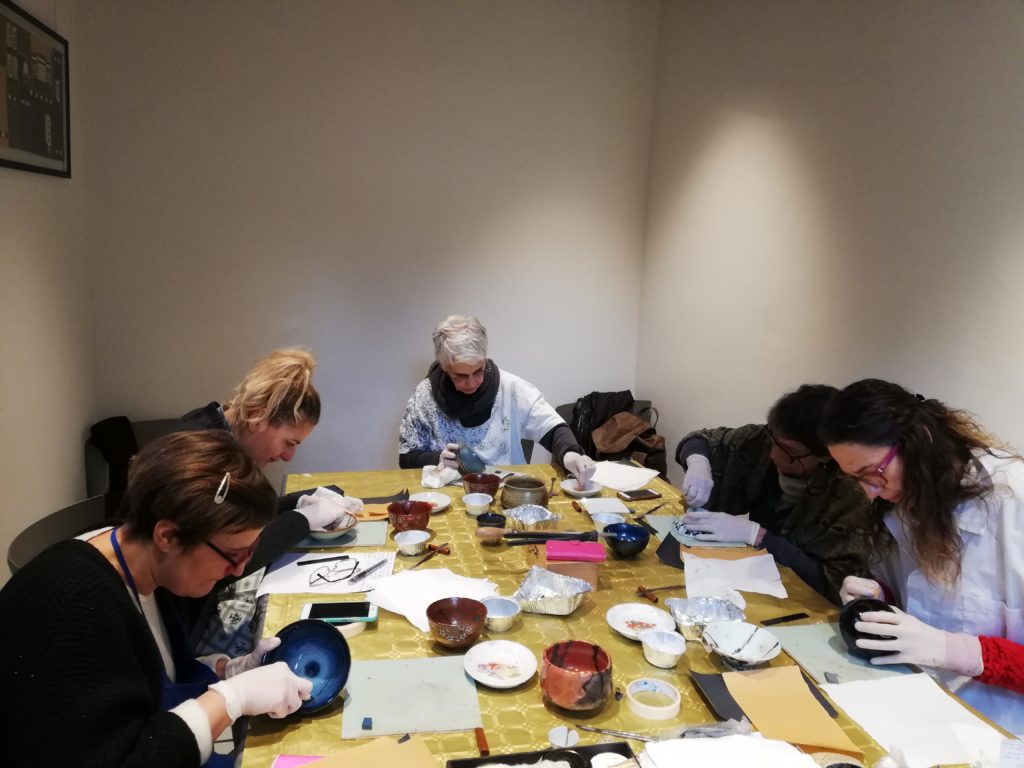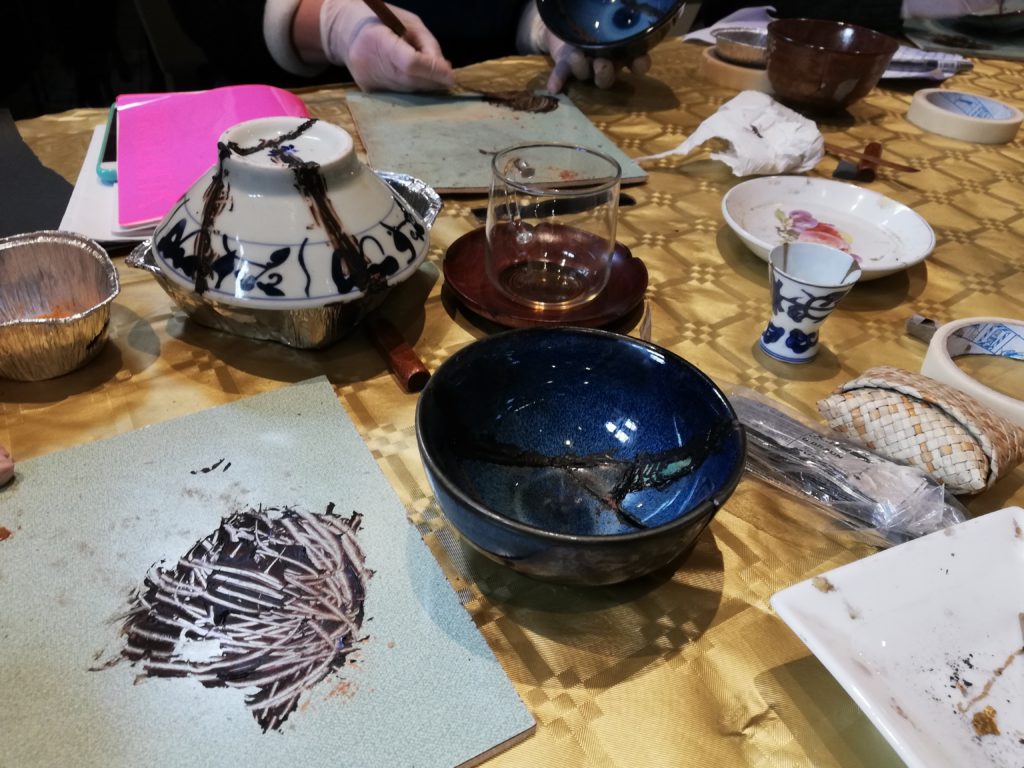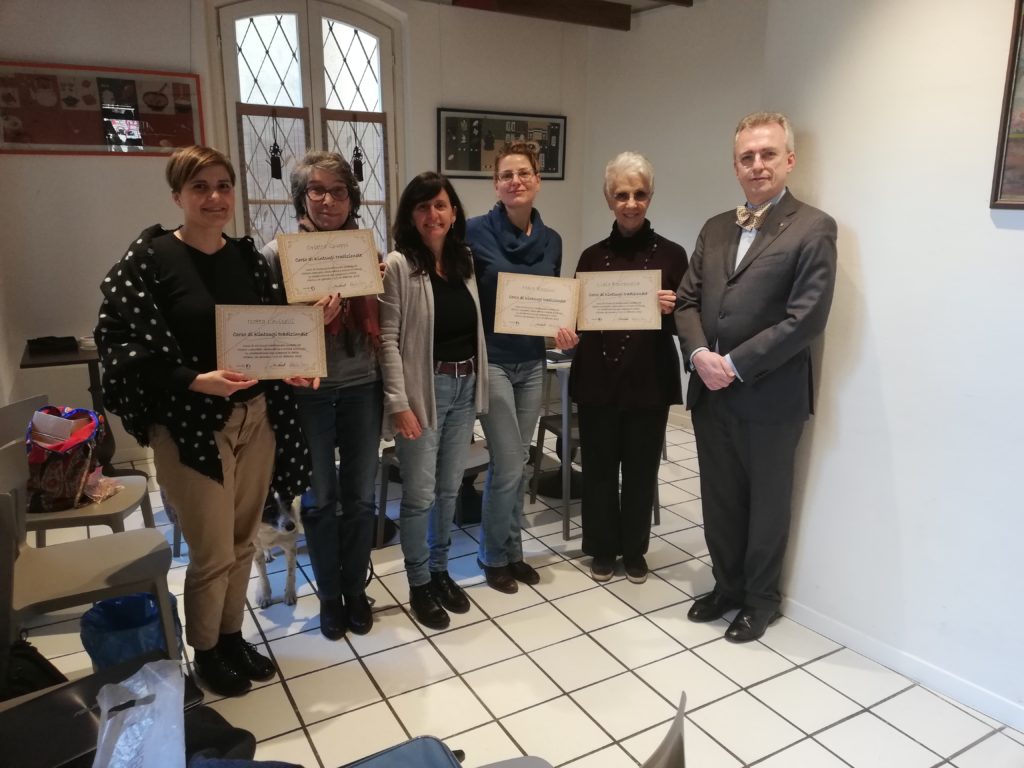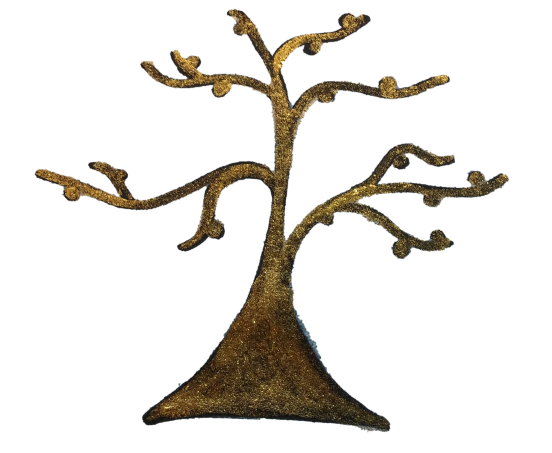Every course has its history; every apprentice entwines tales, passion, art, curiosity and, together, they create a thick fabric made of relationship and sharing.
I chose to commit part of my work as restorer to teaching; I don’t mean to colonize the world with the art of Kintsugi. But I would like to illustrate an unknown and often wrongly interpreted art. The time I dedicate is well spent, because I give my knowledge and, in turn, I receive very pleasant meetings, creative impressions and special emotions.
Teaching the traditional Japanese Kintsugi technique is challenging. It is not only about teaching the technique, but also about generating a passion in the apprentices.
In fact, Kintsugi is a wonderful and precious technique but, above all, it is a complex technique that requires good manual skills and aptitude for manual work.
The urushi lacquer, a natural resin extracted from the Rhus Verniciflua plant, besides being a very resistant, strong and water-repellent material, also has the disadvantage of having an allergenic effect through contact: if it’s not well used one risks serious and troubling skin problems.
This is the first of the hurdles an apprentice has to overcome, and the only way to do this is, first of all, to have the knowledge and, in the second place, a humble and respectful approach.
The lacquer has a delicate polymerisation process, that activates through temperature and humidity and, moreover, it requires a long time. All this is very different from our actual working habit, with its chemical materials that have fast and programmed times and that do not need our control. In turn, the lacquer needs to be looked after, to be followed step by step, every day, until it hardens and becomes ready for the next phase.

How much time are we willing to dedicate?
This is the question I ask my apprentices, this is what I teach them and this is the added value that makes it possible to fall in love with Kintsugi.
The course “Kintsugi, the art of repairing with gold”, which just finished, has been organized together with the association “Giappone in Italia”, and held in the “Teiera Eclettica” store, in Milan, has been a very interesting experience for me. I organized the lessons in four days (four hours each), with an interval of one week. I made this in order to allow the apprentices to become familiar with the slowness of the lacquer. Each one had two ceramics on which we worked during the lessons. They had to look after them at home, checking temperature and humidity and every week they had to bring them back to the lesson in order to keep on working on them.
Instead, the materials used during the course were in common: every apprentice had to take care of them, cleaning and handling them with attention. In fact, this is my first request, on which I am very strict: respecting and cleaning the materials is equivalent to knowing how to work. A clean desk is the first step for a good job.

Orietta, Lidia, Mara, Isotta and Helga. Five women, five different stories, above all in purpose and expectations.
From the very beginning we built a team. If someone needed help, the others helped. At some times I helped personally. Time ran very fast, perhaps too fast, among informations, attentive silences, personal stories and more than a good cup of tea, provided by Barbara, our adorable hostess.

What will my apprentices do now? For the time being I admire their work, well-finished ceramics to which each one of them has given her personal touch. I admire their happy smiles. And I wait to see them blossom, grow and create with courage, professionalism and, before everything else, with respect for an art that comes from an antique time and a far country and of which we are just beginning to learn the profound meaning.



